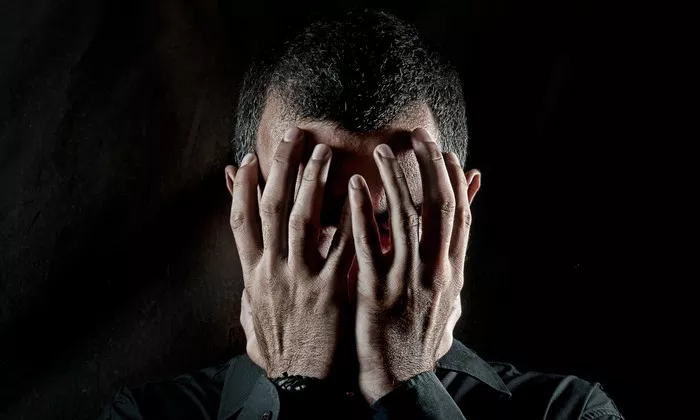Informative and Factual:
Sadness is an emotion that most people experience at some point in their lives. While it’s commonly understood as a mental state, it can also manifest physically, causing discomfort and pain. The connection between sadness and physical pain is well-documented in scientific literature and supported by the intricate interplay between the nervous system, stress hormones, and the body’s physiological response to emotional distress.
The nervous system plays a crucial role in translating emotional experiences into physical sensations. When we feel sad or distressed, the brain’s limbic system, responsible for processing emotions, sends signals to the autonomic nervous system (ANS). The ANS regulates involuntary bodily functions such as heart rate, digestion, and respiration. In response to sadness, the ANS can become dysregulated, leading to various physical symptoms.
Furthermore, the release of stress hormones, such as cortisol and adrenaline, amplifies the body’s stress response. Chronic sadness or depression can result in prolonged exposure to these hormones, contributing to inflammation, muscle tension, and other physiological changes that manifest as physical pain.
Specific types of physical pain commonly associated with sadness include:
Headaches: Sadness can trigger tension headaches or migraines due to increased muscle tension and changes in blood flow to the brain.
Muscle Aches: Emotional distress often leads to muscle tension, particularly in the neck, shoulders, and back, resulting in stiffness and soreness.
Fatigue: Persistent sadness can disrupt sleep patterns and drain energy levels, leading to fatigue and overall physical weakness.
Digestive Issues: The gut-brain connection is well-established, and emotional distress can manifest as digestive symptoms such as stomach cramps, nausea, or changes in appetite.
Research published in medical journals, including the Journal of Psychosomatic Research and Psychoneuroendocrinology, supports the correlation between emotional distress and physical pain. Additionally, mental health organizations such as the American Psychological Association and the National Institute of Mental Health recognize the impact of sadness on physical well-being.
Reassuring and Empathetic:
If you’re experiencing physical pain as a result of sadness, it’s essential to recognize that your experience is valid. The mind-body connection is a fundamental aspect of human health, and acknowledging the impact of emotions on physical well-being is crucial for holistic healing.
It’s common for individuals to downplay their physical symptoms when they believe they are solely related to emotional distress. However, dismissing or minimizing these symptoms can exacerbate both the emotional and physical aspects of distress. Seeking support and validation from healthcare professionals, friends, or support groups can help validate your experience and provide avenues for healing.
Actionable and Helpful:
Managing sadness and its associated physical pain requires a multifaceted approach that addresses both emotional and physical well-being. Here are some practical suggestions for coping:
Seek Professional Help: Consider consulting a therapist or counselor who can provide support, guidance, and coping strategies tailored to your individual needs. Cognitive-behavioral therapy (CBT) and mindfulness-based interventions have been shown to be effective in managing both sadness and physical symptoms.
Practice Self-Care: Engage in activities that promote relaxation and well-being, such as exercise, meditation, deep breathing exercises, or spending time in nature. Prioritizing self-care can help reduce stress levels and alleviate physical tension.
Maintain Healthy Habits: Ensure you’re getting adequate sleep, eating a balanced diet, and staying hydrated. Avoiding excessive alcohol and caffeine consumption can also help regulate mood and minimize physical symptoms.
Connect with Others: Social support is essential for mental and physical health. Reach out to friends, family members, or support groups for companionship, empathy, and understanding.
Remember that healing takes time and effort, and it’s okay to seek support when needed. By addressing both the emotional and physical aspects of sadness, you can work towards restoring balance and improving overall well-being.
Conclusion
In conclusion, the link between sadness and physical pain is real and complex, involving the intricate interplay of the nervous system, stress hormones, and emotional experiences. Acknowledging and validating your experience is the first step towards healing. With the right support and coping strategies, you can effectively manage sadness and its associated physical symptoms, ultimately enhancing your overall quality of life.
FAQs
What happens to your body physically when you are sad?
When you’re sad, your body experiences various physical changes. These can include a drop in energy levels, changes in appetite, disrupted sleep patterns, tense muscles, and even headaches or stomachaches.
Why does your body hurt when you’re sad?
Sadness can trigger the release of stress hormones like cortisol, which can lead to physical symptoms such as muscle tension and headaches. Additionally, when you’re sad, you might engage in behaviors like slouching or decreased physical activity, which can contribute to bodily discomfort.
What is a physical manifestation of emotional pain?
A physical manifestation of emotional pain can be seen in various forms, such as chest tightness, headaches, muscle tension, gastrointestinal issues, or even unexplained aches and pains. These physical symptoms often accompany feelings of sadness, grief, or other forms of emotional distress.
Related topics:
- Understanding Overwhelm: Is it a Sign of Depression?
- Sadness During Pregnancy: Navigating Emotions for Expecting Mothers
- Isolation on Mental Health: Understanding and Overcoming Depression


